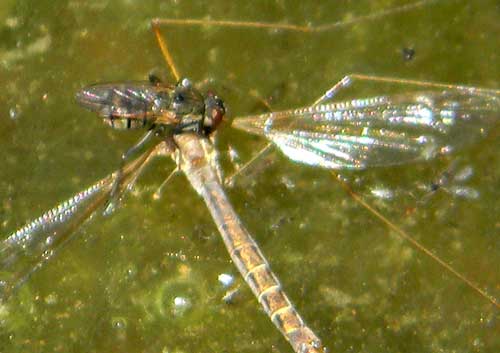Dance Fly
Empididae

A crane fly, having lived out its short life as an adult, becomes food for a scavenging dance fly along the flowing waters of Sycamore Creek in the foothills of the Mazatzal Mountains, Maricopa Co., Arizona, USA. June 2010.
Sponsored Links:
With over 450 species in North America, Dance Flies represent a major component of semi-aquatic habitats everywhere. The immature stages are aquatic, living often in masses of algae washed up on the shore. Some kinds make wormlike tunnels passing through sand containing diatoms and moulds. Other species can tolerate high temperatures and salinity, while others are able to withstand being dried. Most are less than ½ cm long and would generally go unnoticed by casual observers. They do not bite people but may feed on other insects. The name comes from the complex running movements they perform on the muddy edges of water bodies. Look closely and you should find them at water's edge almost anywhere.